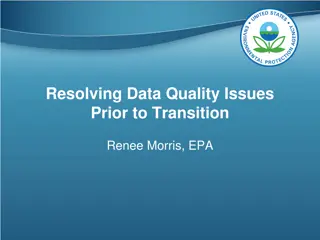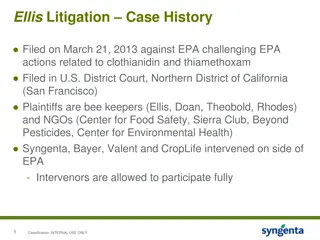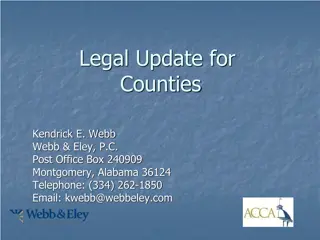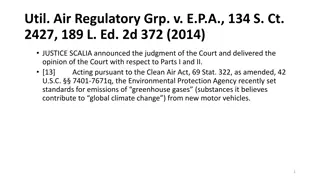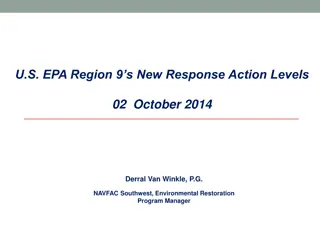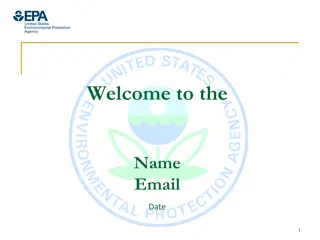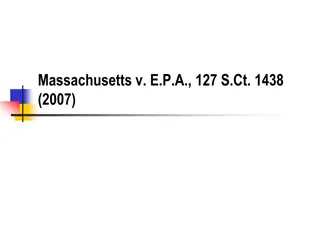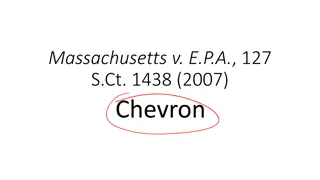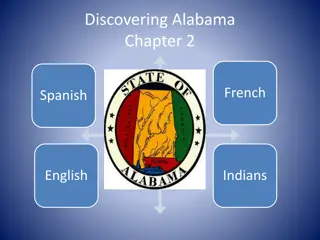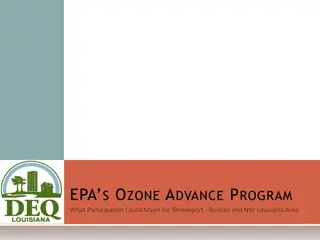Important Information on Alabama EPA UST Regulations: Deadline and Testing Requirements
Alabama Tool Seminars are scheduled in various locations to discuss the new EPA UST regulations that came into effect in 2017. Owners of USTs storing specific biofuels must comply with compatibility requirements, conduct necessary testing by October 13, 2018, and ensure their systems meet the revised regulations. The ban on ball float valves is in place, with specific guidelines on repairs and replacements. Understanding these regulations and requirements is crucial to avoiding penalties and maintaining compliance.
Download Presentation

Please find below an Image/Link to download the presentation.
The content on the website is provided AS IS for your information and personal use only. It may not be sold, licensed, or shared on other websites without obtaining consent from the author.If you encounter any issues during the download, it is possible that the publisher has removed the file from their server.
You are allowed to download the files provided on this website for personal or commercial use, subject to the condition that they are used lawfully. All files are the property of their respective owners.
The content on the website is provided AS IS for your information and personal use only. It may not be sold, licensed, or shared on other websites without obtaining consent from the author.
E N D
Presentation Transcript
Alabama Tools Seminars February 8 Decatur February 13 Pelham February 15 Montgomery February 20 Mobile New EPA UST Regulations: What You Must Have Done by October 13, 2018 adem.alabama.gov
New Regulations already in effect ADEM revised regulations became effective December 8, 2017 Compatibility demonstration requirements and ball float ban already in effect
What Testing is Due by October 13, 2018? Overfill prevention equipment inspections Containment sump testing (if used for interstitial monitoring) 30 day and annual walkthrough inspections Release detection equipment testing Release detection for emergency power generator USTs
Reminder Compatibility Requirements Beginning December 6, 2017, for any UST storing greater than 10% ethanol or 20% biodiesel, owners must notify the department and demonstrate the compatibility of their systems with the fuels being stored. Records must be kept for as long as the UST is storing that fuel
Reminder Ban on Ball Float Valves December 8, 2017, ball float valves may not be used to meet over fill requirements on new installations Current ball float valves may remain in use, but must pass overfill inspection If a ball float fails, it may be repaired If it cannot be repaired, it must be replaced by an automatic shutoff device or high level alarm
What Constitutes a Repair? If the ball float valve can be returned to operation with its original parts, it is an allowable repair If new parts are needed (e.g. new cage, new ball), it is not an allowable repair and the ball float must be replaced by a flapper valve or high level alarm
Replacing Ball Floats According to PEI RP1200-17, a ball float valve set to activate at 90% will interfere with a flapper valve set to activate at 95% When replacing a ball float valve, remove the entire assembly Ball floats set to 95% will not interfere with operation of a flapper calve set to 95%
New Requirement Annual Release Detection Equipment Tests Automatic tank gauge systems and other controllers Probes and sensors Automatic line leak detectors (mlld & elld) Vacuum pumps and pressure gauges Hand held electronic sampling equipment associated with vapor and groundwater monitoring Keep records three years
New Requirement Three Year Inspections and Testing Overfill prevention equipment must be inspected every three years Containment sumps used for interstitial monitoring must be tested for integrity every three years Low level test method developed by ADEM Keep records three years
Walkthrough Inspections Every 30 days Check spill prevention equipment and fill pipe Check release detection equipment to ensure proper operation Check impressed current cathodic protection system rectifier Annually Check containment sumps Check hand held release detection equipment First inspection due by October 13, 2018
Emergency Generator Tanks New federal regs now cover EPG tanks EPG tanks currently in use must have leak detection by October 13, 2018 New EPG tanks installed on or after December 8, 2017 must have leak detection at installation Leak detection systems on EPG tanks will NOT be required to shut off or restrict flow, may use audio or visual alarm alone
Recap - Implementation Timeframes On December 8, 2017: Ban on vent flow restrictor overfill device for new USTs and upon replacement Testing after repairs Overfill device (Inspection) Secondary containment equipment used for interstitial monitoring Compatibility demonstration
Recap - Implementation Timeframes On October 13, 2018: Overfill prevention equipment inspections Containment sump testing (if used for interstitial monitoring) 30 day and annual walkthrough inspections Release detection equipment testing Release detection for emergency power generator USTs
Inspections and Testing Resources ADEM O&M Manual (currently under revision) PEI RP900 - Recommended Practices for the Inspection and Maintenance of UST Systems PEI RP 1200 Recommended Practices for the Testing and Verification of Spill, Overfill, Leak Detection and Secondary Containment Equipment at UST Facilities
Contact Information Sonja Massey 334-271-7832 ssm@adem.alabama.gov David Batchelor 334-271-7937 david.batchelor@adem.alabama.gov Latoya Hall 334-271-7759 lahall@adem.alabama.gov





